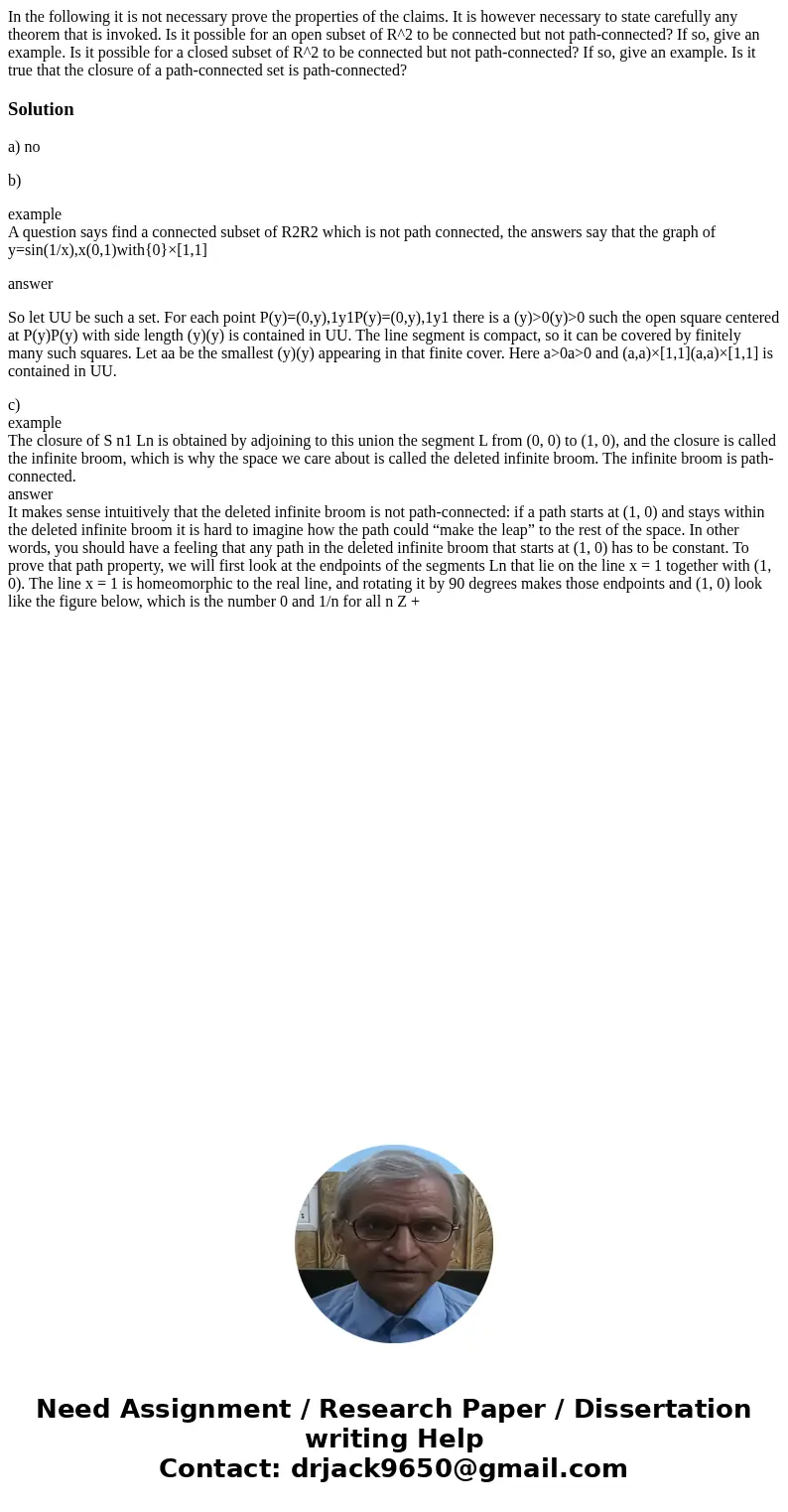In the following it is not necessary prove the properties of
Solution
a) no
b)
example
A question says find a connected subset of R2R2 which is not path connected, the answers say that the graph of
y=sin(1/x),x(0,1)with{0}×[1,1]
answer
So let UU be such a set. For each point P(y)=(0,y),1y1P(y)=(0,y),1y1 there is a (y)>0(y)>0 such the open square centered at P(y)P(y) with side length (y)(y) is contained in UU. The line segment is compact, so it can be covered by finitely many such squares. Let aa be the smallest (y)(y) appearing in that finite cover. Here a>0a>0 and (a,a)×[1,1](a,a)×[1,1] is contained in UU.
c)
example
The closure of S n1 Ln is obtained by adjoining to this union the segment L from (0, 0) to (1, 0), and the closure is called the infinite broom, which is why the space we care about is called the deleted infinite broom. The infinite broom is path-connected.
answer
It makes sense intuitively that the deleted infinite broom is not path-connected: if a path starts at (1, 0) and stays within the deleted infinite broom it is hard to imagine how the path could “make the leap” to the rest of the space. In other words, you should have a feeling that any path in the deleted infinite broom that starts at (1, 0) has to be constant. To prove that path property, we will first look at the endpoints of the segments Ln that lie on the line x = 1 together with (1, 0). The line x = 1 is homeomorphic to the real line, and rotating it by 90 degrees makes those endpoints and (1, 0) look like the figure below, which is the number 0 and 1/n for all n Z +

 Homework Sourse
Homework Sourse